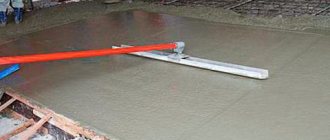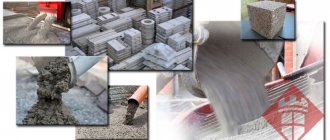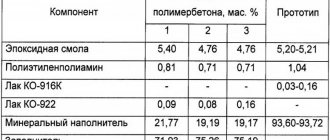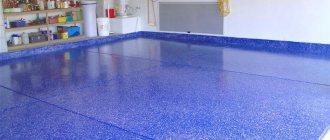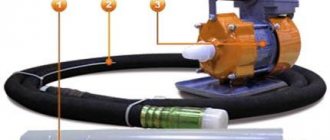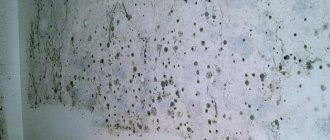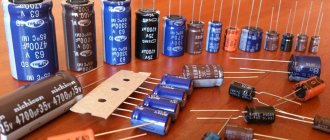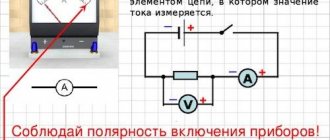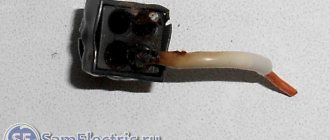Use of plasticizers for concrete
The introduction of plasticizers into concrete solves many problems. With their help:
- change the fluidity and mobility of the solution;
- increase adhesion to metal reinforcement and between the components of the concrete mixture;
- increase the frost resistance of the concrete coating;
- increase the hardening time of the solution;
- reduce the size of pores in concrete.
Reducing the pores in concrete allows you to obtain a strong and durable surface with low water permeability. For this purpose, a ready-made plasticizer, commercially available or made independently, is introduced into the solution.
The following can replace professional formulations at home:
- slaked lime;
- polyvinyl acetate;
- liquid glass;
- detergents – liquid soap, shampoos, washing powders.
Among detergents, it is advisable to choose options with reduced foaming.
Recommendations for arranging a screed for further grinding
Almost any concrete is suitable for grinding a concrete base; the difference lies in the result you get at the end of the work.
It is important to understand that concrete comes in different grades, with different fillers, different ages (time elapsed after pouring), and different quality of screed leveling during its installation. Let's look at each of these questions separately. Brand of concrete. The choice of concrete grade mainly depends on the purposes of further use of the grinding object (for example, a monolith of the floor, a floor in a garage, a concrete path in the garden, etc.), if there are no special strength requirements for the screed, then, as a rule, the recommended grades of concrete - from M150 to M300. Concrete of these grades is strong enough, but not excessively strong, which is important when grinding.
Filler . The filler is crushed stone (pebbles in concrete). Crushed stone comes in various fractions and compositions. For grinding, we recommend concrete with fine crushed stone; with this filler, the concrete screed is better leveled when poured. If you do not plan to further finish the polished concrete or intend to impregnate it with a colorless compound such as a polymer, then you will get a very interesting surface with frequent small inclusions of polished crushed stone. Sometimes marble chips are used as a filler; the appearance of such concrete is simply magnificent. The composition of crushed stone is mainly limestone, gravel, and granite. Limestone is better polished (marble chips also include this). Gravel and granite are very durable and take less sanding.
Age . Concrete actively gains strength in the first 7 days after pouring, the main strength over the next 3 weeks, and the remaining strength of concrete gains over the years. It is recommended to grind concrete that is at least 7 days old after pouring.
It is worth noting that the concrete screed must be almost perfectly level before grinding, and this requires at least the professional skills of the performer. Sand-cement screed is also not suitable for these purposes. Concrete grinding services are not that expensive: working with materials will cost 2.5-3 dollars per square meter. Application of varnish or design is considered separately. Pouring a concrete screed - $3-6 per square meter.
You can see how concrete is ground and polished here.
Modification of concrete screed using liquid glass
An aqueous alkaline solution of sodium or potassium silicates can improve the resistance of the coating to moisture, elevated temperatures, mold and other external influences.
Liquid glass additives are used in two ways - by introducing them into a solution or by treating an already finished surface.
To prepare an anti-dust impregnation and improve waterproofing, 1 kg M400 Portland cement is mixed with water and mixed with 1 kg of liquid glass.
One of the most inexpensive and effective supplements
Silicates are not used in their pure form, as they are quickly washed out with water.
Dilute silicates with clean tap water with a minimum content of impurities and salts. One glass of silicate glue is poured into 10 liters of water and stirred until a homogeneous solution is obtained. Next, add the dry ingredients in parts with continuous stirring.
The resulting solution is consumed immediately, after which the instruments and containers are cleaned.
Fluorosilicate film on concrete surface
Another economical and effective means for impregnating concrete is made on the basis of fluorosilicates - magnesium, zinc and aluminum salts of hydrofluorosilicic acid. These salts enter into chemical reactions with concrete components and form compounds that are insoluble in water.
Salts are called fluates, and the impregnation of concrete with them is called fluating.
The use of fluorosilicates gives the concrete coating the following properties:
- increases strength by 35–45%;
- increases abrasion resistance by 12–15 times;
- reduces dust emissions by 10–12 times.
Fluating also allows you to significantly increase resistance to chemical influences, significantly increases the frost resistance of the surface, compacts it and reduces absorbency.
The most important property of fluting is the vapor permeability of the finished surface. Impregnation does not seal, but only strongly compacts it. Due to this, the use of fluorosilicates is extremely effective on concrete surfaces with poor waterproofing from groundwater and capillary entry of moisture.
Other advantages of using fluate-based impregnations:
- applied once during the entire service life;
- do not wash out from the surface;
- reinforcement in concrete does not corrode;
- the electrical conductivity of the coating does not change;
- abrasive films do not form on it;
- the adhesion (friction) characteristics of concrete do not change, which is important for runways;
- fluates are not organic solvents.
When working with fluorosilicates, it is necessary to take into account their disadvantages. Treatment with fluate impregnations has low efficiency on the following surfaces:
- Concrete with a low cement content and a large amount of sand;
- Very old coating with carbonated lime;
- Concrete that has not gained strength after pouring.
Fluate-based impregnations are non-flammable compounds.
How to make a smooth concrete floor with your own hands
The main factor of any concrete surface is its evenness, which is not as easy to achieve as it might seem at first glance. To get a smooth concrete floor, you need to use special tools, which are always used by craftsmen when concreting and plastering on construction sites. In addition to the uniform distribution of construction mixture, these products allow you to expel and remove “cement laitance” and fill the resulting voids.
Most often, to level a concreted area, both expensive concrete smoothing machines and fairly simple tools are used to achieve a perfectly flat surface at the “setting” stage of the construction mixture.
Rule
The name of this simple product comes from the word “correctly”. The rule itself is an even, narrow ruler, with the help of which you can quickly level the plane with your own hands.
The length of the instrument ranges from 1 to 3 meters in increments of 50 centimeters. The width of the rule varies from 8 to 10 cm for the product itself and about 0.8 – 1.1 mm for the working rib. If we talk about the types of rules, they are:
- Wooden. As you know, wood absorbs moisture well, so after the first use, such a rule may lose its shape, which is why the edges of the ruler will not fit tightly to the concrete surface. Such tools are cheaper, but are only suitable for one-time use.
- Metal. Such a lath will allow you to level the concrete mixture more than once. Aluminum does not deform, does not rust, and does not react even with aggressive building solutions.
Healthy! If you want to extend the “life” of a wooden instrument, thoroughly soak it in drying oil.
It is also worth noting that inside the metal profile there are usually several stiffening ribs distributed along the entire length of the ruler. It is best if one edge in the shape of a semicircular groove is located on the outside of the tool, and the rest are on the inner plane of the rack.
Mechanical grinding
A high-quality polished concrete floor has an excellent appearance and high wear and moisture resistance.
The concrete coating can be given the required degree of water resistance and strength by grinding. Concrete is polished in two ways:
- Dry. It is started after the floor has completely dried. The method is quite dusty, the amount of dust can be reduced by using a vacuum cleaner.
- Wet. The method is more expensive and is usually used for processing mosaic floors made of natural stone.
Both methods require the use of a grinding machine and trained personnel. First, polish with disks with large abrasive fractions, then move on to smaller ones.
Smalted porcelain tiles
Porcelain tiles with imitation concrete give the interior rigor and restraint and are successfully combined with other finishing materials.
Smalted porcelain tiles will help to radically solve the problem of dust on a concrete floor and at the same time preserve its original appearance. This finishing material can be used for external and internal decoration of any premises.
When using all of the above methods of concrete impregnation, it should be remembered that they significantly reduce, but do not completely eliminate the appearance of dust on the surface. To remove dust from a concrete floor, special impregnations based on organic (acrylic, polyurethane, epoxy) or inorganic (topping soil) compounds are used.
Manufacturing technology
The entire concrete polishing chain consists of several links:
- Concrete compression testing;
- Stage 1 of grinding – sealing cracks, general leveling;
- Dust removal;
- Impregnation with special compounds;
- Sealing pores, chips and minor defects with cement;
- Stage 2 of sanding on the wet floor;
- Stage 3 of polishing with grinding devices to the desired degree of gloss;
- If desired, at this stage you can paint the floor with a colored hardener;
- Final polishing and treatment with anti-slip compounds.
The new floor can be polished one day after concreting. If you decide to grind an old concrete floor, for God’s sake, at any time.
Impregnations are called impregnations because they penetrate deeply. Penetrating into concrete, they change its structure, clog pores, increase moisture resistance, and eliminate dust from the surface.
Lithium silicates are all the rage these days. It is on their basis that impregnations are made. Well, for example, the Italian brand of sealer Stain Protection. Do you feel the smell of Rome and pizza? Russian brands LITSIL and Ultralit are also not lagging behind, selling their products throughout the country.
Concrete grades and their use in construction
With impregnations it’s clear. Let's find out what to grind concrete floors with, what equipment? For home squaring, an angle grinder will suffice, but the quality of polishing will be somewhat worse. For large areas, special grinding machines are used. Their result is not to find fault.
